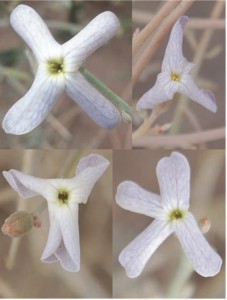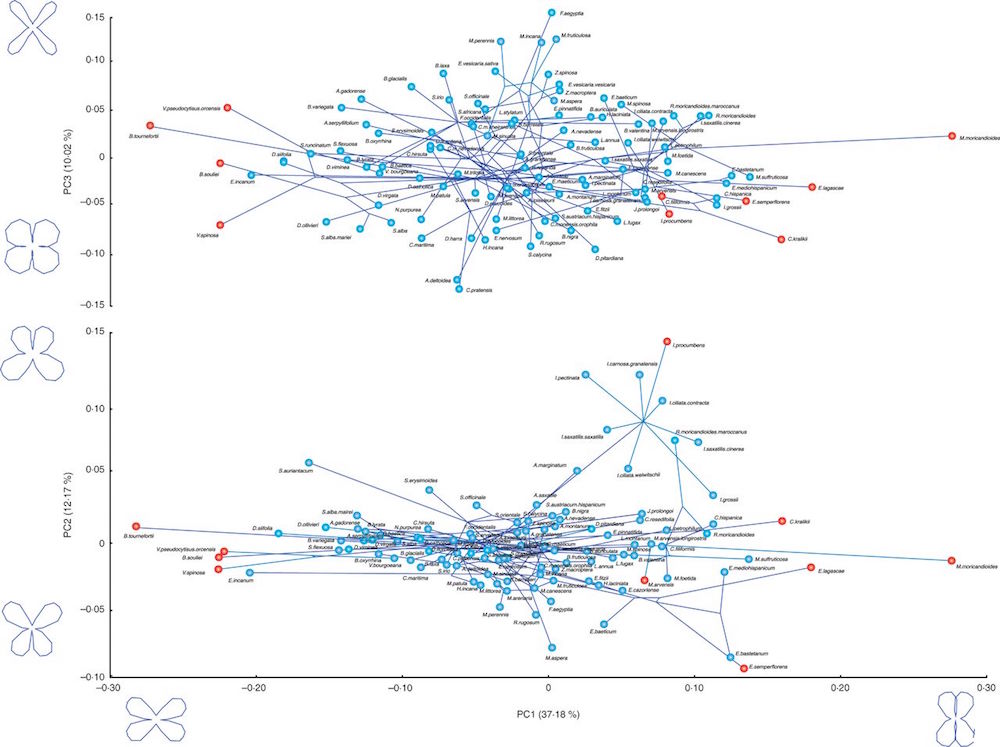Included in Annals of Botany‘s special issue on developmental robustness and species diversity, our papers nalyzes the role of pollinators in the evolution of the phenotypic variation, disparity and integration of the corolla shape of 111 Brassicaceae taxa.

Brassicaceae is one of the most diversified families in the angiosperms. However, most species from this family exhibit a very similar floral bauplan. In this study, we explore the Brassicaceae floral mophospace, examining how corolla shape variation (an estimation of developmental robustness), integration and disparity vary among phylogenetically related species. Our aim is to check whether these floral attributes have evolved in this family despite its apparent morphological conservation, and to test the role of pollinators in driving this evolution.
Using geometric morphometric tools, we calculated the phenotypic variation, disparity and integration of the corolla shape of 111 Brassicaceae taxa. We subsequently inferred the phylogenetic relationships of these taxa and explored the evolutionary lability of corolla shape. Finally, we sampled the pollinator assemblages of every taxon included in this study, and determined their pollination niches using a modularity algorithm. We explore the relationship between pollination niche and the attributes of corolla shape.
Phylogenetic signal was weak for all corolla shape attributes. All taxa had generalized pollination systems. Nevertheless, they belong to different pollination niches. There were significant differences in corolla shape among pollination niches even after controlling for the phylogenetic relationship of the plant taxa. Corolla shape variation and disparity was significantly higher in those taxa visited mostly by nocturnal moths, indicating that this pollination niche is associated with a lack of developmental robustness. Corolla integration was higher in those taxa visited mostly by hovering long-tongued flies and long-tongued large bees.

Corolla variation, integration and disparity were evolutionarily labile and evolved very recently in the evolutionary history of the Brassicaceae. These floral attributes were strongly related to the pollination niche. Even in a plant clade having a very generalized pollination system and exhibiting a conserved floral bauplan, pollinators can drive the evolution of important developmental attributes of corolla shape.
More info: Paper
